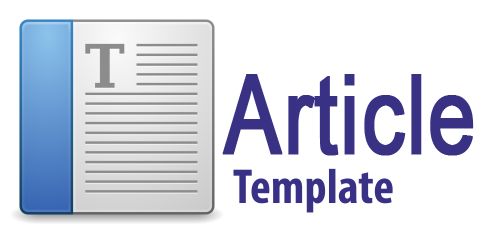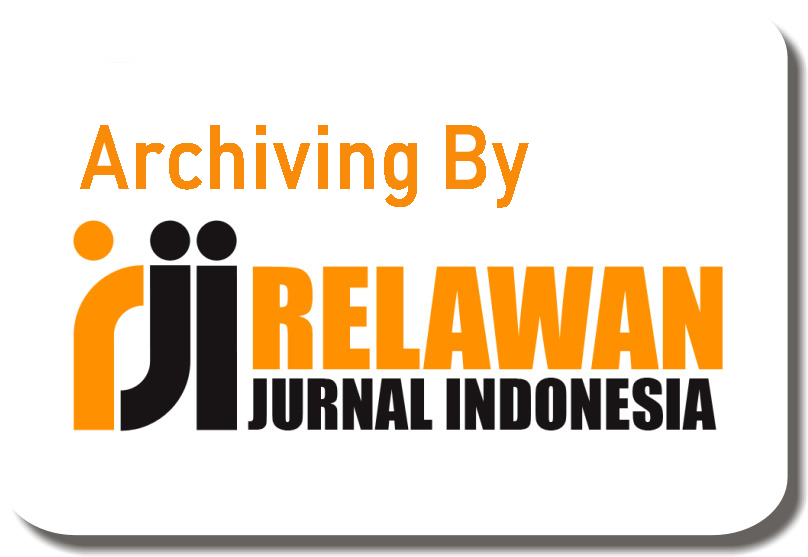Exploring Code – Switching Patterns in Junior High School Students’ English Languange at MTs Amin Darussalam
Abstract
This study investigates the patterns and functions of code-switching in English learning at MTs Amin Darussalam, Deli Serdang, North Sumatra. Using a qualitative phenomenological approach, data were collected through classroom observations, audio recordings, and interviews with eighth-grade students during the 2025/2026 academic year. The analysis followed Miles and Huberman’s framework, focusing on data reduction, display, and conclusion drawing. Findings reveal three main types of code-switching: inter-sentential, intra-sentential, and tag switching, with inter-sentential switching being the most frequent. Teachers primarily used code-switching to explain lessons, clarify meanings, and manage classroom interaction, while students employed it to overcome vocabulary limitations and enhance self-expression. Tag-switching served to seek confirmation and maintain classroom rapport. Overall, code-switching was found to facilitate comprehension, build confidence, and create a supportive learning environment. The study concludes that code-switching is a natural and effective communicative strategy in bilingual classrooms.
Keywords
Full Text:
PDFReferences
Alkassim, R. M. (2016). Comparison of convenience sampling and purposive
sampling. American Journal of Theoretical and Applied Statistics, 5(1), 1-4. 10.11648/j.ajtas.20160501.11
Al Azzawi, Q. O., Sadoon, M. M.., & Mahdi, H. H. (2018). Code switching
and Code mixing: A sociolinguistic study of Senegalese international students in Iraqi colleges. Journal of University of Babylon for Humanities, 26(3), 112-122.
Al Hayelk, R. (2016). Arabic-English code-mixing by Jordanian university
studelnts. http://researchdirect.westernsydney.edu.au./islandora/object/uws:36867/datastream/PDF/download/citation.pdf.
Al Heety, N. H., & Al Abdely, A. A. (2016). Types and functions of code
switching in the English language used by Iraqi doctors in formal settings. International Journal of Advanced Research and Review, 1(8), 10-18. https://www.ijarr.in/Admin/pdf/125.pdf
Ansar, F. A. (2017). Code switching and code mixing in teaching-learning
process. Journal Tadris Bahasa Inggris, 10(1), 29-45. https://ejournal.radenintan.ac.id/index.php/ENGEDU. Journal of English Language, Literature, and Teaching 2, no. 1 (2018): 39.
Aini, Nur. “Universitas Mitra Indonesia Nur Aini Bahasa Indonelsia Sebagai
alat Media Komunikasi Sehari-Hari,” n.d.
Ajiza, Masrurotul. “Penggunaan „ Code - Switching ‟ Dalam Pelmbelajaran
Bahasa,” 2022, 219–21.
Baker, C. 2006. Foundations of Bilingual Education and Bilingualism. Canada:
Multilingual Matters Ltd.
Brown, D.H. 2001. Teaching by Principle: An Interactive Approach to Language
Baker, C. 2006. Foundations of Bilingual Education and Bilingualism. New
York: Multilingual Matters LTD. Barnes, 2008. Exploratory talk for learning. Exploring talk in school. Los Angeles, London, New Delhi: SAGEL, 1-5
Burden, P. 2001. Whelm do native English speakers and Japanese college
students disagree about the use of Japanese in the English conversation classroom? The Language Teacher, April 2001. [Online] Available: http://www.jaltpublications.org/tlt/articlels/2001/04/ burden. Accessed on 2015-08-28. Pedagogy. White Plains, NY: Pearson Education-Longman.
Burns, A. (2010). Doing Action Research in English Language Teaching: A
Guide for Practitioners. Routledge.
Cook, V. (2001). Using the first language in the classroom. Canadian Modern
Language Review, 57(3), 402–423.
Cantone, K. F. 2007. Code-Switching in Bilingual Children. Dordrecht: Springer.
Chloros, P. G. 2009. Code-Switching. New York: Cambridge University Press.
Cook, V. 2001. Second Language Learning and Language Teaching. London:
Arnold.
Drelkurs, R & B. Gunawan. 1982. Maintaining Sanity in the Classroom:
management Technique. New York: Harper Collins Publishing.
Edi Suwandi. 2016. Teacher’s Code Switching in Classroom Interaction At
SMKN 1 Makassar. Thesis Not Published. Makassar: State University of Makassar.
Ellis, R. 1999. Learning A Second Language Through Interaction. Amsterdam:
John Benjamin’s.
Gulzar, M. A. 2010. Classroom Discoursal in Bilingual Context: Effects of Code
switching on Language Learning in Pakistani TELFL Classroom. Dissertation. Islamabad: National University of Modern Language
Hamers, J. F. and M. H. A Blanc. 2004. Bilinguality and Bilingualism (2nd ELd).
New York: Cambridge University Press.
Rahimi, A. & Eftekhari, M. 2011. Psycholinguistics Code Switching in Iranian
University Classroom Context. The Journal of Language Teaching and Learning, (online) Vol.1, No 54-56 http://www.jltl.org/jltl/. Accessed on 2015-08-28.
Rezvani, E., & Rasekh, A. E. 2011. Codeswitching in Iranian Elementary ELFL
Classrooms: An Exploratory Investigation. www.ccselnelt.org/ellt English Language Teaching Vol. 4, No. 1 (23); March. Published by Canadian Canter of Science and Education.
Richard, J. And Schmidt, R., 2002. Dictionary of language teaching and applied
linguistics. London: Pearson Education.
Lin, A. M. Y. (2013). Classroom code-switching: Three decades of research.
Applied Linguistics Review, 4(1), 195–218. https://doi.org/10.1515/applirelv-2013-0009
Macaro, E. (2005). Codeswitching in the L2 classroom: A communication and
learning strategy. In EL. lurda (ELd.), Non-native language teachers: Perceptions, challenges, and contributions to the profession (pp. 63–84). Springelr.
Poplack, S. (1980). Sometimes I’ll start a sentence in Spanish y termini eln
Española: Toward a typology of code-switching. Linguistics, 18(7-8), 581–618.
Sert, O. (2005). The functions of code-switching in ELLT classrooms. The
Internet TELSL Journal, 11(8). Retrieved from http://itesj.org/Articles/Sert-CodeSwitching.html
Skiba, R. (1997). Code-switching as a countenance of language interference.
The Internet TELSL Journal, 3(10). Retrieved from http://itesj.org/Articles/Skiba-CodeSwitching.html
Safirah, A. (2021). Applying Code-switching Strategy in English Language
Classroom at the Secondary School (A Mixed-Method Study). Skripsi. UIN Syarif Hidayatullah.
Safithry, N Anita. 2018. Assessment Teknik Tells dan Non-Tells Suluh: Jurnal
Bimbingan Dan Konselling
Schmidt, Anastasia. (2014). Between the Language: Code-Switching in
Bilingual Communication, Anchor Academic Publishing
Section, Code Switching Performed by Junior High School Students in
English Class: The Case of the First Year Student of Smp Negeri Kragan, Kabupaten Rembang in the Academic Year of 2009/2010
Silaban, Suardani, Tiarma Intan Marpaung, (2020). “An analysis of code-
mixing and codeswitching used by Indonesia lawyers club on TV One”, JELTAFL (journal of English teaching as a foreign language), volume 6, Issue 3.
Sugiyono. 2018. Meltode Penelitian Kuantitatif, Kualitatif, dan R&D. Bandung:
Alfabeta.
Sugiyono (2019). Meltode Penelitian Kuantitatif, Kualitatif, dan R&D.
Bandung: Alphabelt.
Spolsky, B. 1998. Sociolinguistics. Oxford: Oxford University Press.
Syam, U.K. elt al. (2018). Code Mixing and Code Switching in the Classroom
Interaction at SMA Negeri 2 Takalar. IOSR Journal of Humanities and Social Science (IOSR-JHSS), 23(7), pp. 95-99.
DOI: https://doi.org/10.31004/jele.v10i5.1490
Refbacks
- There are currently no refbacks.
Copyright (c) 2025 Nurul Ramadhani, Yulia Arfanti

This work is licensed under a Creative Commons Attribution-ShareAlike 4.0 International License.



